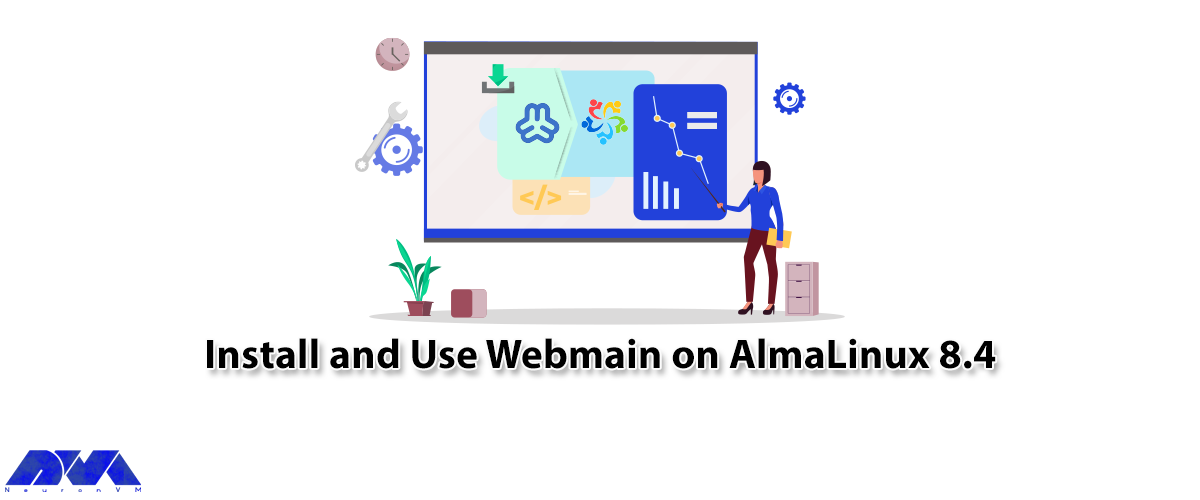






MariaDB is an open-source, popular, and free database management system and is a compatible drop-in replacement for the popular MySQL database management system. This system is compatible with most operating systems like Linux, Mac, and Windows. We suppose you have basic knowledge of Linux and will try to show a step-by-step guide for setting up MariaDB on AlmaLinux.
Here, we will go through step-by-step instructions to have a successful installation process of MariaDB on AlmaLinux.
Here are the requirements that you should mention before the installation process:
– A Linux VPS with the AlmaLinux operating system
– A root user account or non-root sudo user (a non-root user is recommended)
– SSH access to the server
– Minimum 1 GB RAM and 10 GB free disk space
– 1GHz CPU
To start the installation of the MariaDB management system on AlmaLinux, you have to be sure that your system is up-to-date. Use the following command to update your system:
sudo dnf clean all
sudo dnf update
sudo dnf groupinstall "Development Tools"
As a default, MariaDB is available on the AlmaLinux base repository. So, the installation is really easy using the dnf command:
sudo dnf install mariadb-server mariadb
When you finish the installation step, you need to start and then enable the database server service to start the system automatically with the reboot:
sudo systemctl start mariadb sudo systemctl enable mariadb sudo systemctl status mariadb
Well done! you finished the installation successfully.
MariaDB is presented with default settings, but since these settings make MariaDB weak, an additional step can be taken to increase its security. To do this and improve the security of the Mariadb engine, you need to apply the following script. Then you will encounter a series of prompts that will require you to make changes to the security options:
sudo mysql_secure_installation
Follow the instructions below carefully to secure MariaDB and set a root password, delete anonymous users, permit remote root login, and remove the test database. Type Y then press enter to confirm all these prompts:

***

It would be an easy process to create or add a database in MariaDB. First of all, you should log in to the MariaDB server:
mysql -u root -p
Now create a database using the command below:
Tip: We chose new_db as our new database name.
CREATE DATABASE new_db;
If you decide to create a new user, you should enter the MariaDB shell as the root user and execute the following command:
CREATE USER 'new_user'@'localhost' IDENTIFIED BY 'password';
Use the command below to grant permissions for your new user:
GRANT ALL PRIVILEGES ON new_db.* TO 'new_user'@'localhost' IDENTIFIED BY 'password';
At last save or flush privileges:
FLUSH PRIVILEGES;
You can use mysqldump methods for backing up and restoring MariaDB databases on your operating system.
If you decide to Backup the application database, you should create a dump file by mysqldump tool. The name of the application should be exchanged with the name of the database you wish to export:
mysqldump -u root -p neuronvm_app > backup.sql
But if you decide to backup all databases, use the command below:
mysqldump -A -u root -p > backup.sql
Depending on the database size, the operation will take some time.
After you finish the backup process, you can use the command below to restore the data:
mysql -u root -p < backup.sql
But if you want to restore to a specific database, insert the database name in the commands shown below:
mysql -u root -p -D neuronvm_app < backup.sql
Here, we will analyze some issues related to Mariadb on AlmaLinux:
1- Database Corruption: In MariaDB, there are cases where database corruption can occur which leads to data integrity issues. This may be caused by power outages, disk errors, or other factors. So, backup your database regularly and use tools like mysqlcheck to check and repair corrupted tables.
2- Performance bottlenecks problem: Slow query processing or poor overall performance can be caused by a variety of factors, such as missing indexes, inefficient queries, insufficient hardware resources, or misconfigured MariaDB settings. So you can analyze slow query reporting, optimize queries, and change configuration parameters such as innodb_buffer_pool_size and key_buffer_size based on your workload and system resources.
3- Security vulnerability problems: Like any other program, MariaDB may have security vulnerabilities. These vulnerabilities should be fixed quickly. So, avoid potential risks with the latest security patches and upgrades for AlmaLinux and MariaDB.
You should consider some critical practices for using MariaDB on AlmaLinux. These factors are:
This article was presented to show the way to install and configure the MariaDB database management system. Also, you learned how to backup databases and troubleshoot some problems that are related to MariaDB usage on AlmaLinux. This was a complete guide to help you understand and use MariaDB on your AlmaLinux operating system. We hope you enjoy this content.
MariaDB community is provided open-source and free. Commercially developed components are released under the business software license.
When it comes to performing replication or queries, MariaDB is faster than MySQL.
How useful was this post?
Click on a star to rate it!
Average rating 5 / 5. Vote count: 1
No votes so far! Be the first to rate this post.
 Tags
Tags

The Control Panel is a set of sub-programs that can be used to configure various aspects of the Oper...



 Tags
Tags

The database is one of the primary and most essential elements any software needs to work. A website...



 Tags
Tags
What is your opinion about this Blog?








